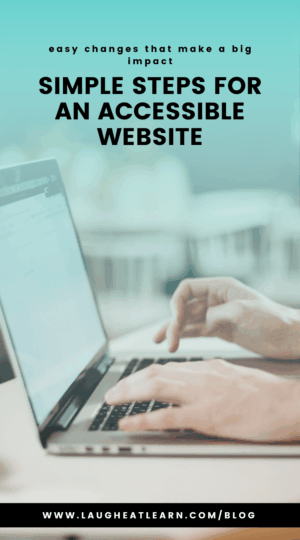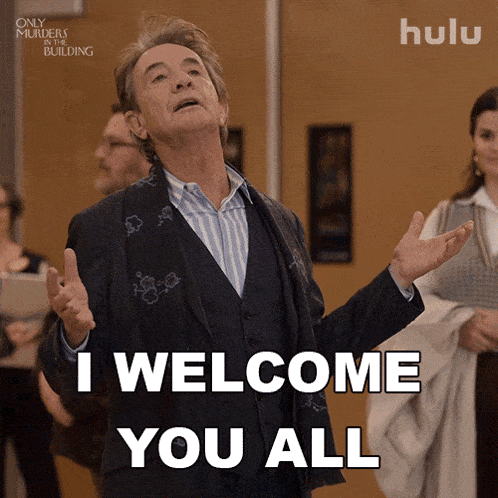
You interact with websites multiple times a day, but you might not have considered how accessible those websites are to those with disabilities, like visual impairments. An estimated 16% of the population has a disability that impacts their daily life, and yet, web accessibility is still a big issue! The good news is that it’s easy and inexpensive to make your website accessible. In fact, it’s something I include with each and every website I design. Let’s talk about web accessibility 101, so you can make sure your website can be accessed by everyone who wants to learn from and engage with you.

Is your website accessible? Pin to save!
What is Web Accessibility?
Web accessibility, or eAccessibility, makes sure that anyone who wants to use your website is able to. Whether they have a visual, physical, auditory, or other disability, they are not prevented or hindered from accessing information.
I know that can sound complicated. Can a website really be accessible for every person? Instead of being paralyzed by perfection, I’m going to encourage you to take these web accessibility 101 tips and apply what you can. I promise, accessibility is a lot easier than it might seem!

The 4 Principles of Web Accessibility
To understand web accessibility 101, you really need to know the four principles of accessibility. I’m going to share what each principle is and how you can apply it to your website.
#1 Perceivable
🤷🏻♀️ What It Is: A website is perceivable when it can be taken in by multiple senses. We see this all the time in daily life! Bathroom signs with Braille or captions on a video.
👉🏻 How to Do It: Make sure any videos you include on your website have the option for captions. Include alt-text for all images on your site. (Nope, alt-text isn’t about SEO! It’s about accessibility.) You can also provide a transcript for a podcast or video on your site.
#2 Operable
🤷🏻♀️ What It Is: You want your website to be accessible by keyboard functions as well as by mouse. It also means making sure the flow of your website is predictable and easy to follow.
👉🏻 How to Do It: The flow of each page should be easy to follow and logical. Your website should also be mobile-friendly.
This is where hiring a website designer knowledgeable in accessibility is a must! When I design websites for clients, I make sure web accessibility is baked in from the beginning (and I don’t sacrifice design to make it happen 😉). I also offer Designer Days, where we can fix inaccessible parts of your website – no need to start from scratch!

#3 Understandable
🤷🏻♀️ What It Is: Your website content should be understood by all users. That means that the text is readable and the language of the page is clearly stated (specifically for those using screen readers).
👉🏻 How to Do It: Use clear, easy-to-read fonts across your website. Check the color contrast of your website background, font color, and buttons to make sure they are easy to read.
#4 Robust
🤷🏻♀️ What It Is: Your website can be read by assistive technology, like screen readers.
👉🏻 How to Do It: Your website has clear, simple code that can be used across different browsers and devices. It can also be read by different assistive technologies.
Again, this is where hiring a knowledgeable website designer can help! While there are some ways to clean up your website and code after it’s been built, it’s a lot easier to make sure your site is accessible from the beginning. That’s what I do with all my clients!
Accessibility doesn’t have to be complicated. By using easy-to-read fonts, adding alt-text to images, and checking your site contrast, you can make your site easy to navigate for every person who pays it a visit. My hope is that you take these web accessibility 101 tips and begin to implement them across your site, even if it’s one change at a time.

be the first to comment